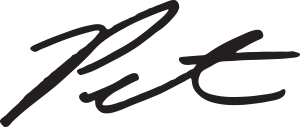How to Lead and Succeed with “SFA”: Success from Anywhere
How to Lead and Succeed with “SFA”: Success from Anywhere
“Work from home” became a necessity with COVID. Then evolved the idea of “work from anywhere” – whether that be home, a local café, or other workspace.
Even as we work through the sometimes half-hearted attempts to bring our employees back to the office, the organizational development and talent attraction and retention idea that I believe will stick is “SFA” – success from anywhere.
What is SFA, and how can we make this work, especially among ‘back to the past’ forces within us that have very likely already cost us in terms of missed opportunity and preparedness for our inevitable future state?
“The future is not the office of old. Our success as leaders and organizations hinges on our willingness and our ability to allow our talent and teams to succeed from anywhere.”
–Peter C. Atherton, P.E.
Let’s leave the resistance to SFA aside for a moment (or at least until the podcast link at the bottom of this article) because even the skeptics and the naysayers recognize the competitive disadvantages of not offering some type of work flexibility in this employee-driven market… hence the half-hearted and tempered calls for a full return to the office.
We’ve been on a path to distributed work in the engineering and architecture space for a long time, especially for those of us desiring to be “practice centered” versus office or geographic location based.
The model that will best deliver the deep expertise and innovation that clients are demanding and optimize our internal talent development and workload management is decentralized and distributed, and this shouldn’t be limited to just full-time traditional employees.
If we’re willing for good, valid, and strategically sound reasons to have talent from different company-logoed offices work on different projects for different principals and managers, what’s the difference if they’re sitting in a home office or local co-working space as long as the work is getting done?
And there’s the rub: the questioning about whether the work is getting done.
Despite being proved effective during COVID and despite record-high industry profits, work from anywhere other than the formal office is still not embraced by too many at the top. Unfortunately, this is also adding friction and frustration into too many organizations at a time when we can least afford it.
Whether we’re trying to effectively coordinate getting work done across regional offices, leverage the power of a hybrid team, or live the full expression of a “mixed-hybrid” business model which leverages a team of full and part-time employees and independent professional freelancers, the elements for SFA are the same and include:
- Having a meaningful mission and vision
- Clearly defining and communicating success
- Establishing and maintaining trust
Mission and Vision:
It’s really hard to imagine a fully co-located organization thriving long-term without a meaningful mission and vision and compelling set of core values. These are even more important to have when our talent is spread.
Putting in the work to define why you exist and the change you want to see and help manifest in the world, however that’s defined, is a critical unifying force that helps individuals and teams transcend today’s tasks – whether you seek to attract, engage, and motivate “missionaries” or “mercenaries”.
Clarity:
Ineffective teaching, collaboration, and delegation alongside “just-in-time management” and last minute quality control with limited feedback doesn’t work in the office or anywhere else.
No matter our location, sustainable success requires that winning be clearly defined and understood at each stage of any endeavor. In our case, hours must be replaced by agreed to outputs and outcomes. These, along with a clear set of go-by’s, how-to’s, and routine and effective one-on-one and team communication, are essential for this new era.
Trust:
Do you think of today’s professionals as non-committed old time factory workers requiring constant supervision to ensure they remain productive? If so, it’s just a matter of time before all your office walk throughs and parking lot drive-by’s drive most of your high achievers and high potentials away physically or in terms of level of engagement.
We all know that trust is essential for any real relationship to succeed, particularly a vulnerable type of trust advocated for by Patrick Lencioni. Workplace compliance does not equal trust, nor do hours spent in an office on a project mean that a client’s problem is solved in the most efficient or effective manner. It also doesn’t mean that an opportunity to innovate, collaborate, or build organizational value in terms of a new or enhanced process or system was capitalized on.
In a work context, trust is foundational to high functioning teams and organizations. If we want to enjoy all the benefits of trust, we, as leaders, must be willing and able to establish and maintain it. We must also be willing to extend it to others.
The type of trust needed for success requires that we consistently and authentically exhibit each of the following five elements:
- Competence – our ability to fully understand our role to deliver what others need and expect from us in an economically viable manner.
- Acceptable actions and behaviors – our ability to operate morally, ethically, legally, and with fairness in terms of both approach and holding ourselves and others to account.
- Motivations beyond self – our ability to demonstrate why we do what we do and that we’re serving the interests of others, including our teams and team members.
- Impact – our ability to show actual results and a track record of success.
- Right responses to the unexpected and unintended – our interest and ability to step up, acknowledge, and appropriately take care of what went wrong.
These are of course the exact same elements we’ll want to teach, incentivize, and reward throughout our organization no matter where our talent resides.
There’s also the reality that the professional work environment has changed, and that more flexibility must be afforded individuals and teams to design and begin to live more “ideal days” to end the chaos and become more productive, less frustrated, and less apt to disengage or burnout.
These elements and attributes of trust, however, can only be realized through consistent modeling and commitment from the top. If not, we really shouldn’t expect any meaningful long-term success at any level or location.
“The fact is that the very things that will make us successful in the office will make us and our teams successful from anywhere.”
–Peter C. Atherton, P.E.
Long-term and sustainable success never happens by accident. It requires relevant and effective leadership plus a whole lot more – including having great teams.
If we’re able to establish and maintain trust, clearly define and communicate what winning looks like at all levels and for all functions, and have an inspiring and unifying mission and vision, we will never need to limit our success to any single or set of logoed buildings.
That said, creating the conditions to cash in on successfully getting the work done from anywhere with greater flexibility will very likely increase the likelihood that your talent will want to spend more time in the office with colleagues when necessary and beneficial… and possibly even most of the time if and when accessible. A true win-win!
Tune in to the podcast version of this blog for more, as well as a dive into the “resistance” mentioned at the top and, more importantly, how to overcome it.
To your winning,

PS – Ready to help position you and your firm for greater success? Check out our Strategic Planning, Leadership and Management Training Development, and Executive Coaching programs.
PSS – Are you a leader who wants to stay relevant and effective and help your firm grow and prosper? Check out the AEC Leadership Today Podcast designed exclusively for you HERE!

Pete Atherton
About the Author
Peter C. Atherton, P.E. is an AEC industry insider with over 30 years of experience, having spent more than 24 as a successful professional civil engineer, principal, major owner, and member of the board of directors for high-achieving firms. Pete is now the President and Founder of ActionsProve, LLC, author of “Reversing Burnout. How to Immediately Engage Top Talent and Grow! A Blueprint for Professionals and Business Owners”, and the creator of the I.M.P.A.C.T. process.
Pete is also the host of The AEC Leadership Today Podcast and leads The AEC Leadership Mastermind.
Pete works with AEC firms to grow and advance their success through modern and new era focused strategic planning, executive coaching, leadership and management team development, performance-based employee engagement, and corporate impact design. Connect with him through the contact link below.


